Kari’s Law
Kari’s Law is named for Kari Hunt who was killed by her estranged husband in a motel room in Marshall, Texas in December of 2013. Ms. Hunt’s 9-year-old daughter had tried to dial 911 several times during the attack but was not able to because she did not know she had to first dial “9” to get an outbound line.
Through this tragedy, lawmakers realized there is a problem caused by many of the multi-line telephone systems typically found in hotels, offices, and universities. These systems require users to dial an additional digit to use an outside line — even when they are trying to call 911.
Congress enacted Kari’s Law in 2018. The legislation requires multi-line telephone systems (MLTS) to be configured so dialing 911 directly connects to public safety. MLTS phone systems are typically found in enterprises such as office buildings, campuses, and hotels. These requirements went into effect on February 16, 2020.
If your telephone system requires your employees and other users to dial a number to get an outside line, your business must comply with this law.
Fortunately, most of today’s newer telecom systems meet Kari’s Law. However, it’s important to verify your system works as required and that the emergency dispatcher sees the correct information for the location of the phone from which 911 is dialed.
RAY BAUM’S Act
In addition to the direct dialing and notification requirements of Kari’s Law, the FCC has also created rules to improve the dispatchable location information associated with emergency calls from MLTS phone systems. In environments such as hotels, school campuses, warehouses, and multi-level office buildings, it can be difficult to find the exact location of a person calling 911. RAY BAUM’S Act was created to ensure faster and more accurate responses to 911 calls. Under RAY BAUM’S Act, “dispatchable location” data must be conveyed to emergency services for all 911 calls without further action required by the caller, regardless of the technology type.
This act will begin to go into effect on January 6, 2021, and January 6, 2022, depending on the nature of the service.
Kari’s Law and RAY BAUM’S Act Compliance
Your business needs to have a complete safety protocol in place for its facilities. Complying with 911 regulations will help you to properly plan for the safety of your onsite and remote employees. Additionally, failure to bring your business to compliance can result in large fines up to $10,000 and additional penalties of up to $500 per day of noncompliance.
To verify your phone system is compliant you’ll need to find the administrative phone number for your location’s 911 call center, likely known as the public safety answering point (PSAP), and ask what steps you need to take to verify that your location is compliant.
You’ll need to be sure that the following information is displayed for the 911 operator should someone need to call for emergency help:
1. The name of your business
2. The address from which you are calling
3. The telephone number from which you are calling
This information needs to be verified for each outbound line in your building(s).
If your system is not able to reach 911 without dialing another number first, or if you’re not sure if your business telephone system complies with Kari’s Law and RAY BAUM’S Act, contact us and we can work with you to be sure all the necessary programming changes have been made to your system to bring you into compliance.
